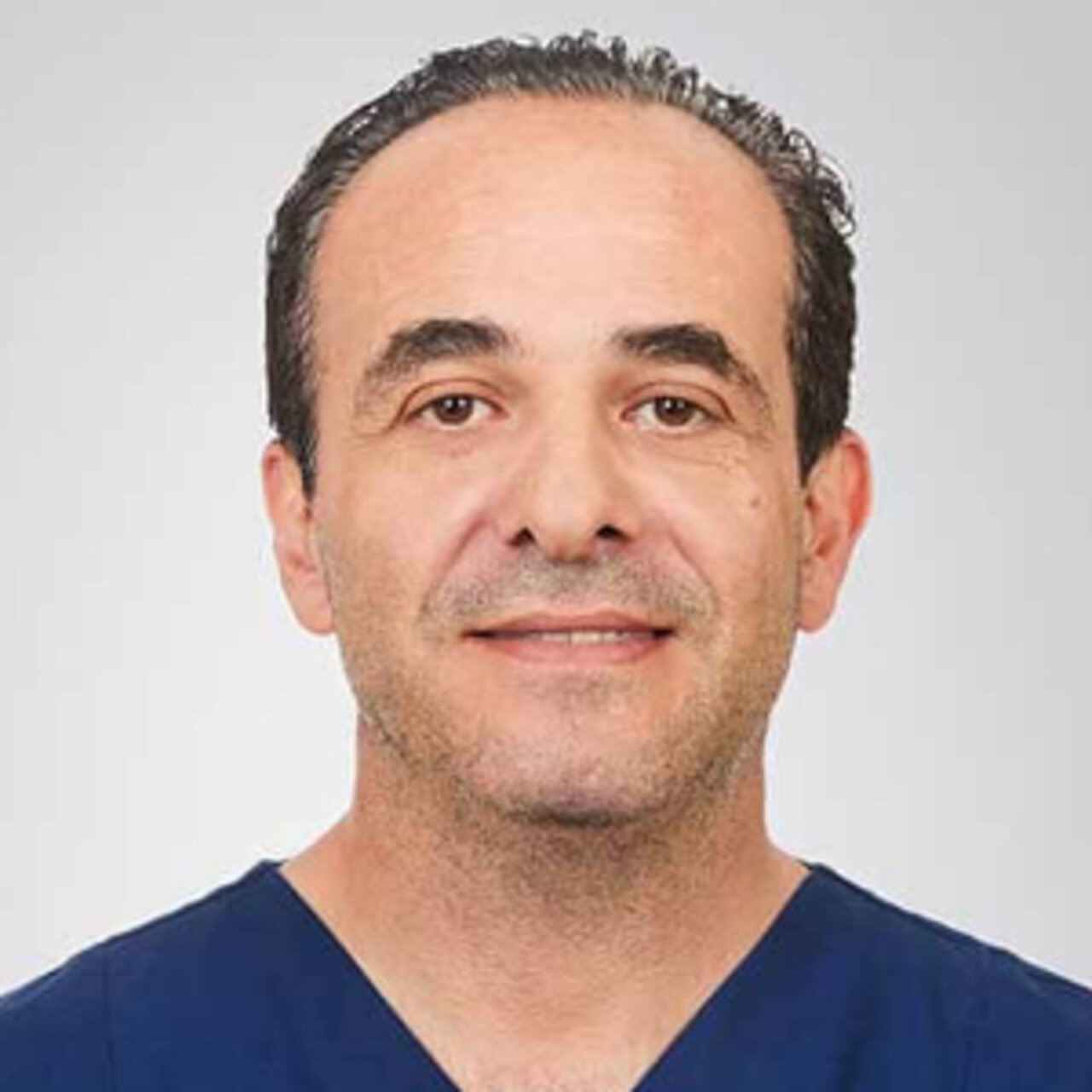Specialists in Cervical cancer
11 Specialists found
Information About the Field of Cervical cancer
Definiton: What is cervical cancer?
Cervical cancer, also known as cervical carcinoma, is the deterioration of cells within the cervix. Depending on the origin of the tumor within the cervix, a patient may have squamous cell carcinoma or adeno carcinoma.
Squamous cell carcinoma is a cervical tumor within the upper mucous cell-layer and is among 70-80% of the most common cancer illnesses in the cervix. Adenocarcinoma, occurring at 10-20% of cervical cancers, is less common and occurs in the glandular tissue of the cervix.
The change of cells, from normal cervical cells into cancer cells, occurs over a period of many years. The cancer cells advance through pre-cancer stages, which can be easily identified by gynecologists through a swab test.
In the precancerous stage or in early stages, cervical cancer is almost always curable. Therefore, it is very important that yearly cancer screening appointments with a gynecologist take place after the 20th year of age.
Cervical cancer or uterine cancer? What is the difference?
The uterus includes the body of uterus and the cervix. Cancers of the cervix are significantly more frequent than cancers of the body of the uterus. In medicine, due to different courses and therapy, the following uterine-tumors a distinguished:
- Cervical cancer
- Uterine cancer (endometrial carcinoma)
- Cancer of the uterine muscle (uterine sarcoma)
Causes and risk factors for cervical cancer
Throughout the course of several years, various risk factors for the development of cervical cancer have been identified. The common factor is hereby due to sexual activity. The risk is increased by early and frequent sexual activity, as well as by the amount of sexual partners.
Among particular population groups with good genital hygiene and/or circumcised men (under the foreskin, in the moist, warm environment, microbes are most comfortable), cervical cancer is significantly less frequent.
In this context, human papillomavirus (HPV) has also been closely investigated. Here it is seen, that sexually transmittable viruses can be frequently attributed to the malignant transformation of cells within the cervix. Certain virus types over the years in the vaginal area can be stopped. Also, viral infections, such as the herpes-simplex-virus or HIV, as well as increased nicotine consumption, increase the risk for developing cervical cancer.
Cervical cancer symptoms
Only circa 5% of infections lead to cellular changes and the pre-stages of malignant cervical cancers. Here, the disease usually manifests without presenting symptoms. Occasionally it can lead to light bleeding, or in later stages, to contact bleeding during sexual intercourse or light discharge.
In very advanced stages, the tumor can constrict organs within the pelvic area, and lead to bladder and intestinal disturbances of various kinds, with pain of varying strength and duration. Pregnancy has no influence on the cancer development.
Diagnostics and stages of cervical cancer
In the framework of cancer prevention after 20 years of age, it is recommended to undergo a pap smear of the cervix once a year by the gynecologist. The cells which are taken with a cotton swab are examined under a microscope for cellular changes. The test results are divided into the following stages and decides the further procedure:
- Pap I: Result is normal
- Pap II: Single cells have changed, but no reason for concern
- Pap III: A further evaluation and clarification is required
- Pap IV: Pre cancer (dysplasia) or cancer in early stages is very possible
- Pap V: Cancer is very probable
Further diagnostics following Pap III
If during the pap-test, the result Pap-III is confirmed, it doesn’t mean that cancer is present. Following this result, there should be consistent monitoring. An HPV test can also be conducted. Cell changes during Pap III can independently regress, without requiring further therapy. The treating gynecologist will discuss further reasonable procedures with the patient.
Further diagnostics following Pap IV and V
Following a Pap IV or Pap V result, further diagnostics should be initiated. To examine the cell changes of the cervix, an examination known as a colposcopy should be carried out. The treating gynecologist, using a light, examines the cervix, colors suspicious areas with vinegar or iodine and takes a tissue sample. The colposcopy is no different than a normal gynecological examination and is painless. Also, for most patients, the removal of biopsy tissue is usually painless.
The sample is then sent to a laboratory for fine-tissue examination. A few days may pass until the findings are sent back to the gynecologist. If cell changes are confirmed by the tissue sample, the classification into groups of stages is determined depending on the degree and spread of the cell alterations.
The following stages can be distinguished:
- Precancerous stage
- Early-stage cervical cancer
- Invasive Carcinoma (cervical cancer)
The further classification of precancerous stages following CIN and SIL, as well as of cervical cancer according to FIGO or TNM classification can be found here:
Further diagnostics for cervical cancer
The next diagnostic measure following the examination of the tissue sample is highly dependent on an individual case basis. To prepare for therapy, necessary information on the tumor is gathered using X-ray and ultrasound examinations, and in certain stages with an MRT (magnetic resonance tomography) or a PET-CT (to determine if it has spread, attacked neighboring organs, or has spread to other body parts).
Treatment of cervical cancer
The therapy of cervical cancer is orientated based on the stage of the tumor and the age or general health condition of the patient and should, when possible, be lead by a specialist for gynecological oncology. When pre cancer and cervical cancer is in its early stages, surgery is usually enough to achieve recovery.
If the tumor has spread, but has not affected further parts of the vagina or the pelvis, surgery is the best option. Following surgery, radiation chemotherapy can take place. Also, neoadjuvant chemotherapy (chemo prior to the operation) is possible, to reduce the risk for reoccurrence.
In the case that the cervical cancer has spread beyond the cervix, it must be decided on an individual case basis, whether surgery is possible, or, whether radio chemotherapy, chemotherapy, or radiation therapy is the best protective treatment for the patient and will maintain the patient’s quality of life.
Treatment of pre cancer
The pre stage of cervical cancer (CIN) can be monitored by gynecologists regularly for 24 months. It can independently regress, but may also advance. If it advances, it should be surgically removed. This can take place either locally by cutting out the affected tissue (in the case the patient wishes to bear a child), or through the removal of the entire uterus (hysterectomy). Here, each case is to be individually considered. During a discussion with experienced specialists within a gynecological cancer center or dysplasia center, the desires of the patient with individual possibilities and risks will be weighed out together.
Treatment of early stage cervical cancer
In early stages, as in precancerous stages, the surgical removal of the tumor (conization) can be enough. Here, using a knife or an electric sling, the affected tissue can be removed and examined by a pathologist. If the incision borders are free of tumor tissue, there can be a 98% chance of recovery.
If the patient expresses the desire to bear a child, it is possible to keep the uterus in special cases. This possibility should be individually discussed with the gynecologist. This will clarify the possibilities of fertility preserving surgery and the according risks.
The treatment of cervical cancer that has spread beyond the cervix
In later stages of cervical cancer, conization (usually an outpatient surgery on the cervix) is no longer sufficient. Here, depending on the case, the uterus, parts of the vagina, ovaries, and affected areas of the bladder and intestine are removed. This is always evaluated by case. Usually, a non-operative therapy such as radio chemotherapy, chemotherapy, or radiation, or brachytherapy, are recommended.
Doctors in cancer centers decide, in a so-called tumor conference, which non-operative treatment to the late-stage cervical cancer promise the best chances and least diminish the patient’s quality of life.
What is the prognosis of cervical cancer?
The prognosis of cervical cancer at early stages are excellent when treated. At the removal of the uterus, there is a 95-100% chance of full recovery. In advanced stages, the rate of recovery decreases significantly.
Following successful therapy, it is important to have consistent follow-up examinations and post-examinations, in order to discover and treat a tumor reoccurrence as early as possible.
Primary prevention plays a large role. Here, regular precautionary examinations, proper genital hygiene of sexual partners, circumcision, and the use of condoms help.
Cancer screening helps through early detection and vaccinations protect from new diseases
Every woman who regularly goes to the gynecologist knows the pap-smear test, which with help of a swab taken from the cervix is then examined. This examination is among others to thank that the number of cervical cancer illnesses in the last years has consistently decreased.
Throughout thorough pre cancer examinations, numerous early forms of cervical cancer can be discovered. The highest incidence of cervical cancer occurs between 35-40 and 60-65 years of age.
Through the identification of various risk factors and causes, the HPV-virus (human papillomavirus) vaccination was brought into the market. This virus is responsible for 70% of cervical cancer cases. The vaccination for girls between ages 12 and 17 is recommended, who at the best case have not been sexually active.
Sources:
http://www.awmf.org/leitlinien/detail/ll/032-033OL.html
http://www.awmf.org/leitlinien/detail/ll/015-027.html
http://www.nds-krebsgesellschaft.de/bilder/pdf/123.pdf
http://www.aerzteblatt.de/pdf/105/47/a2541.pdf
Stauber, Manfred; Weyerstahl, Thomas (2007): Gynäkologie und Geburtshilfe. 3., aktualisierte Auflage. Stuttgart: Georg Thieme (Duale Reihe).
Keck, Christoph; Denschlag, Dominik; Tempfer, Clemens (2004): Facharztprüfung Gynäkologie und Geburtshilfe. 1000 kommentierte Prüfungsfragen ; 6 Tabellen. Stuttgart: Thieme.










